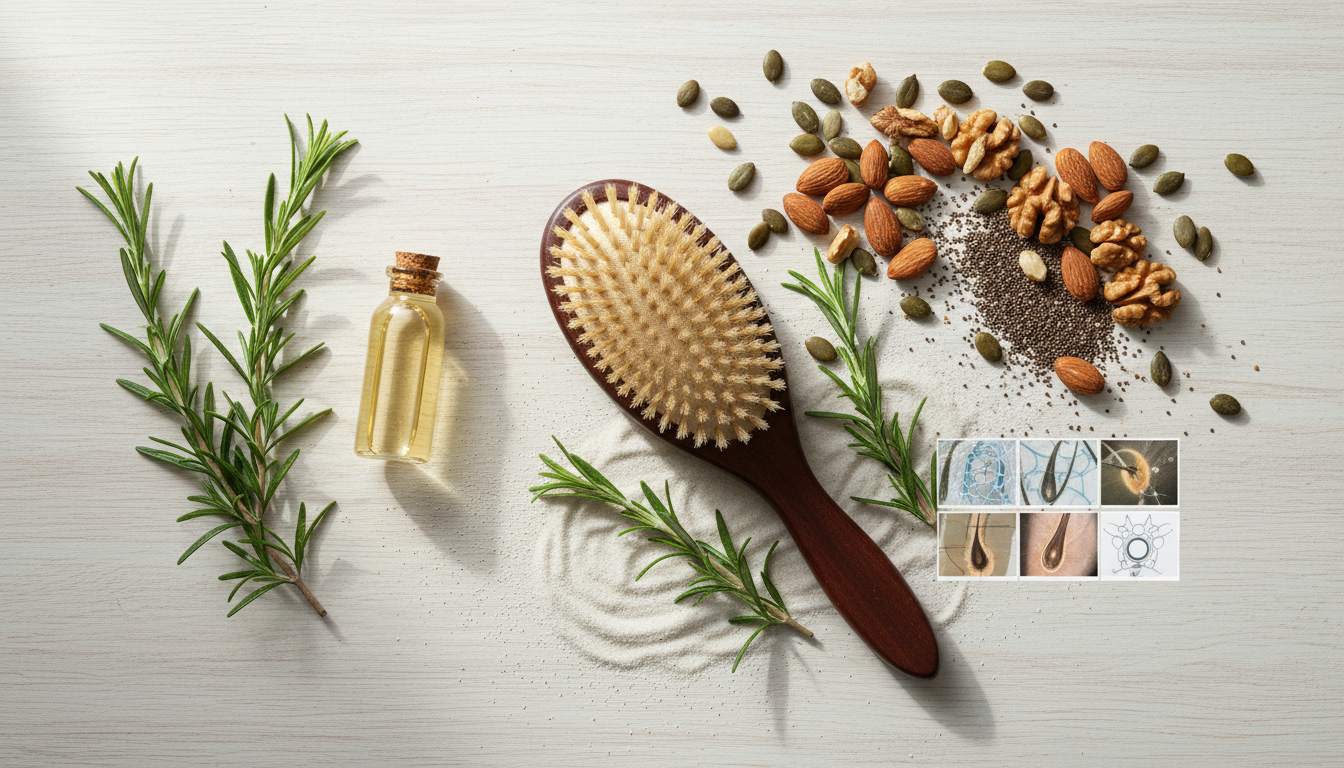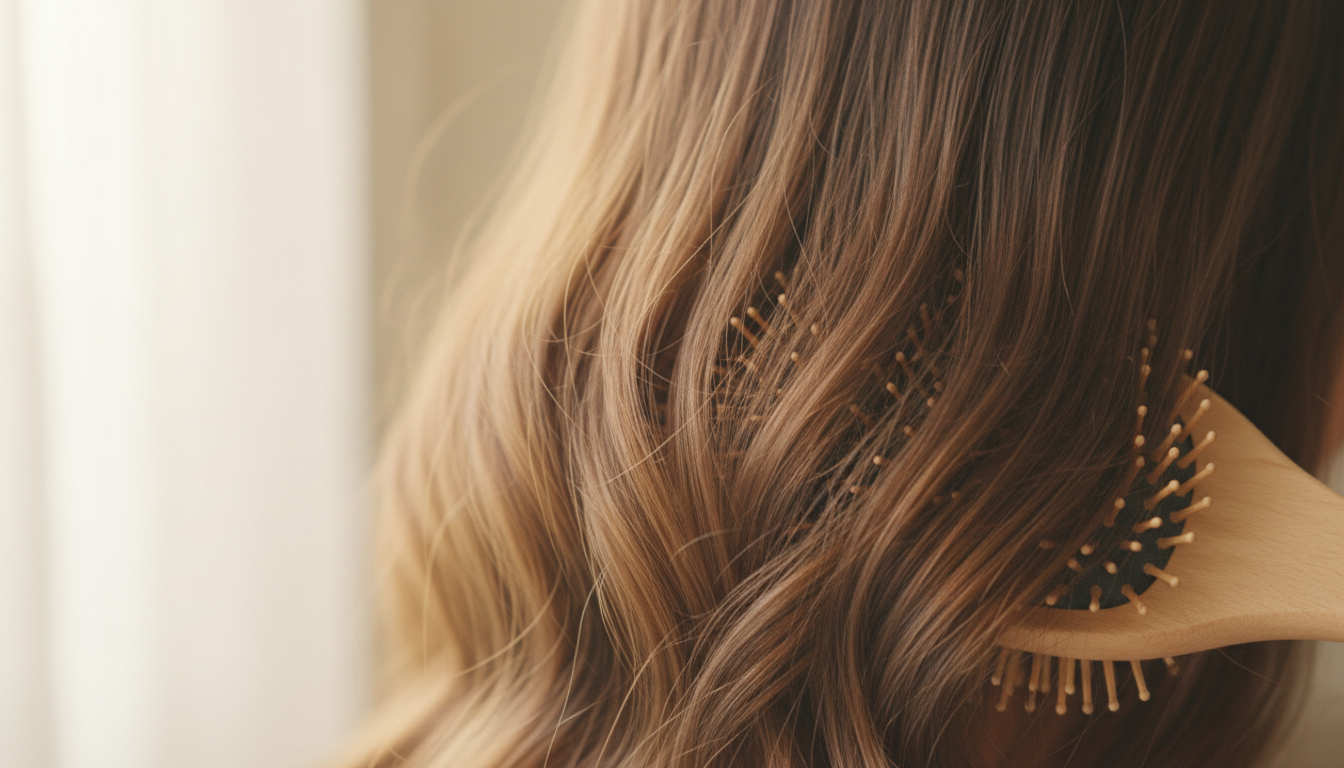Hair Growth Myths Busted: What Actually Works · Medyko Team

Hair Growth Myths Busted: What Actually Works for Healthier Hair

Your Grandmother Was Wrong About Hair Growth – 10 Myths Debunked by Science
Hey there, if you've ever stared at your hairbrush in frustration or scrolled through endless tips online, you're not alone. Many women dealing with thinning or slow-growing hair chase after quick fixes based on old advice that just doesn't hold up. From cutting your hair to make it grow faster to believing expensive products are always better, these hair growth myths persist because they've been around for generations, fueled by misinformation and wishful thinking. But here's the good news: separating fact from fiction can help you focus on what really supports your hair's health. In this post, we'll bust 10 common myths with practical insights drawn from real experiences and a bit of science, then share what actually works to help you feel more confident about your routine.
Why Myths Persist: Generations of Misinformation
Hair growth myths have been handed down like family recipes, often starting with well-meaning advice from grandparents or beauty magazines from decades ago. Many women notice these ideas popping up in conversations – 'Cut your hair short, it'll grow back thicker!' – because they sound simple and hopeful. But in our experience working with countless women facing hair concerns, these tales stick around due to a mix of partial truths and lack of clear info.

Back in the day, without easy access to dermatologists or studies, people relied on trial and error. A trim might coincide with a growth spurt from better nutrition, creating the illusion of cause and effect. Today, social media amplifies it all, with influencers sharing unverified tips that go viral. The result? Confusion that leads to wasted time and money on ineffective habits.
The reality is, hair growth is influenced by genetics, hormones, diet, and scalp health – not shortcuts. Understanding why these myths endure helps us move past them. Many women we've talked to felt relieved just knowing the truth, so they could tweak their routines realistically. Let's dive into the myths and uncover what you can actually do to support your hair.
Myth #1: Cutting Hair Makes It Grow Faster
We've all heard this one: chop your locks, and they'll sprout back super speedy. In our experience, many women try frequent trims hoping for a growth boost, only to see no real change. The truth is, cutting your hair doesn't affect the follicles or roots where growth happens – it's like trimming grass; the roots keep doing their thing at a steady pace.
Hair grows about half an inch per month on average, influenced by your overall health, not the length above the scalp. Regular trims can prevent split ends and breakage, making hair appear healthier and fuller, but they won't speed up the growth cycle. Studies suggest the anagen (growth) phase is set by genetics and hormones, not scissors.
What to do instead: Schedule trims every 8-12 weeks to maintain shape and remove damaged ends. Focus on scalp massages during washing to gently stimulate circulation – many women report this feels soothing and supports a healthy environment for growth. Pair it with a gentle routine to avoid stressing your strands.
Myth #2: Washing Daily Causes Hair Loss
If you've skipped shampoo days fearing it'll pull out your hair, you're buying into this common worry. Lots of women mention feeling guilty about daily washes, thinking it's stripping away precious strands. But the fact is, washing removes the natural shed hairs that would fall out anyway – it doesn't cause loss.
Normal shedding is 50-100 hairs a day, and shampooing clears buildup without harming roots. Over-washing with harsh products might dry out your scalp, leading to itchiness or breakage, but gentle daily cleansing often helps by keeping follicles clean and unclogged. In our talks with women, those with oily scalps found daily washing reduced irritation and supported healthier growth.
Practical tip: Choose a mild, sulfate-free shampoo and focus on massaging your scalp for a minute or two. This can improve blood flow without aggressive scrubbing. If your hair feels dry, alternate with co-washing or conditioners. Listen to your hair type – curly or fine hair might need less frequent deep cleans, but daily rinses are fine for most.
Myth #3: 100 Brush Strokes Daily Stimulates Growth
Remember the old rule of 100 strokes a night for shiny, growing hair? It sounds romantic, but in practice, it often does more harm. Many women we've chatted with ended up with tangled, broken strands after trying this, as excessive brushing pulls on fragile hairs and causes split ends.
Brushing stimulates the scalp mildly by distributing oils, but overdoing it leads to breakage, not faster growth. The roots aren't 'activated' by strokes; they're driven by nutrients and hormones. Research shows gentle detangling is key, while aggressive brushing can weaken hair shafts.
Better approach: Use a wide-tooth comb or soft-bristle brush on dry hair, starting from the ends up. Aim for 5-10 gentle strokes to smooth without pulling. For stimulation, try finger-combing during conditioner application. Women often find this reduces fallout and leaves hair feeling stronger over time.

Myth #4: Shaving Makes Hair Thicker
Shaving your head or legs and watching hair come back 'coarser'? It's a myth that tricks the eye. Plenty of women experiment with this for body hair, but it doesn't change the follicle's output – shaved hairs just have blunt ends, creating the illusion of thickness.
Hair texture is determined deep in the root, not by the cut surface. As it grows out, the taper returns, and it feels normal again. No evidence supports shaving altering growth rate or diameter; it's all optics.
What helps instead: To get truly thicker-looking hair, nourish from within with a balanced diet rich in protein and biotin. Topically, serums with peptides can support follicle health. Many women notice a difference with consistent use, focusing on real strengthening rather than illusions.
Myth #5: Stress Causes Permanent Baldness
Life's stresses can make your hairline a worry, but it's rarely permanent. Women often blame work or family pressures for ongoing loss, but stress typically triggers temporary telogen effluvium, where hairs enter the resting phase early and shed more, then regrow.
Chronic stress raises cortisol, which may disrupt the growth cycle, but once managed, hair bounces back in 3-6 months. Permanent baldness like pattern hair loss is more genetic or hormonal.
Steps to ease it: Practice stress-busters like yoga or short walks – many find this helps shedding slow. Ensure good sleep and nutrition; omega-3s from fish or nuts can calm inflammation. If shedding persists, chat with a doctor to rule out other causes.

📊 Not Sure What's Causing Your Hair Concerns?
Take our 2-minute Hair Analysis Quiz to get personalized product recommendations based on your unique hair type, scalp condition, and lifestyle.
Start Your Free Hair Analysis →
Myth #6: You Inherit Baldness Only from Mom's Dad
This family tree tale pins it all on grandpa, but it's oversimplified. Women frequently hear this and panic about their dad's side, yet baldness patterns come from multiple genes on both parents' chromosomes.
Androgenetic alopecia involves over 200 genes, so inheritance is polygenic – you could get traits from mom, dad, or both. Studies confirm it's not just the maternal line; environmental factors play in too.
Realistic view: Track family history on both sides, but don't stress – early habits can influence outcomes. Focus on scalp care; gentle routines help regardless of genes.
Myth #7: Natural Ingredients Don't Work
Skeptical of 'all-natural' claims? Some dismiss them as weak, but certain naturals are powerhouse supporters. For instance, red clover extract has shown up to 93% effectiveness in reducing DHT in some experiences, helping follicles thrive.
Not all naturals are equal, but ones like rosemary or biotin-rich foods can aid circulation and nutrition. In our view, combining them smartly often yields gentle, consistent results without harsh chemicals.
Try this: Incorporate natural serums, like those with peptides and red clover in Medyko's Grow & Glow Serum, which many women say supports healthier growth over time. Start with patch tests and consistency.
Myth #8: Expensive = Better
Dropping big bucks on luxury hair products? Price doesn't guarantee results – it's about targeted ingredients. Women often splurge thinking high cost means high efficacy, but affordable options with proven actives work just as well.
Focus on labels: look for minoxidil alternatives or antioxidants, not hype. Studies show formulation matters more than branding.
Smart shopping: Build a routine with quality basics – a good serum and shampoo. Save money for what nourishes your scalp directly.
Myth #9: Hair Can Repair Itself
Damaged ends begging for a fix? Hair can't self-heal like skin since it's dead tissue once grown. Many women hope conditioning will 'repair' splits, but it only coats temporarily.
True repair means promoting new, healthy growth from the follicle. Breakage from heat or chemicals needs prevention, not reversal.
Action plan: Trim regularly and use protective products. Nourish roots with massages and balanced meals to grow stronger strands.
Myth #10: Supplements Are a Miracle Cure
Popping pills for instant growth? They help only if you're deficient in things like iron or vitamin D. Women often expect miracles, but without a gap, extras just pass through.
Research suggests biotin aids if low, but overdoing can imbalance. Get tested first.
Better way: Eat whole foods – eggs, nuts, greens. Consult a pro for personalized supps; combine with topical care for best support.

What Actually Works: A Summary of Evidence-Based Tips
Now that we've busted the myths, let's focus on what truly supports hair growth. From real-world patterns, consistent scalp care and lifestyle tweaks make the biggest difference for many women.
Key supports: Gentle cleansing keeps follicles clear; massages boost circulation. Nutrition matters – protein, iron, and zinc fuel growth. Studies suggest ingredients like red clover or peptides can reduce DHT and strengthen roots, as seen in products like Medyko's Grow & Glow Serum, which combines them for targeted nourishment.
Hormone balance via stress management and sleep helps too. Avoid tight styles to prevent traction loss. Patience is key; changes take 3-6 months. Track progress with photos, and if needed, see a dermatologist. Many women find mixing these creates fuller, healthier hair without myths' false hopes.
Frequently Asked Questions
Does cutting my hair really make it grow faster?
No, cutting doesn't speed up growth from the roots – it just removes damaged ends for a healthier look. Many women find trims every 10 weeks prevent breakage, making hair seem fuller. Focus on scalp health instead for real support.
Is daily washing bad for my hair?
Not if you use gentle products; it removes shed hairs and buildup without causing loss. For oily scalps, it can even help. Opt for mild shampoos and condition well to keep strands hydrated.
Can stress really cause bald spots?
Stress can trigger temporary shedding, but not usually permanent baldness. Managing it with relaxation techniques often brings hair back in months. If spots persist, check with a doctor for underlying issues.
Are natural hair products ineffective?
Some are very effective, like red clover for DHT reduction. Look for evidence-backed ones in serums. They work gently over time when used consistently, without harsh side effects.
Do expensive shampoos grow hair better?
Not necessarily – check ingredients over price. Affordable options with peptides or antioxidants can support growth just as well. Build a simple routine around what your hair needs.
Can supplements fix my thinning hair?
Only if you're deficient; otherwise, they're not magic. Prioritize a nutrient-rich diet and get bloodwork done. Topical treatments often pair better for noticeable results.
Why does my hair shed more after shampooing?
It's likely just loosening natural shed hairs – normal is 50-100 daily. If excessive, review your routine for irritation. Gentle washing usually stabilizes it.
Is baldness only from my mom's side?
No, genes from both parents contribute. It's complex, so focus on modifiable factors like diet and care rather than family history alone.
How long until I see growth improvements?
Typically 3-6 months with consistent habits. Track changes and adjust based on what works for your hair type.
Can shaving my head help regrow thicker hair?
It won't change thickness – that's follicle-deep. It might give a fresh start post-stress, but growth returns to normal taper.
Key Takeaways
- Trim regularly to prevent breakage, but don't expect faster growth from cuts.
- Wash gently as needed to clear shed hairs without fear of loss.
- Brush softly to distribute oils, avoiding excessive strokes that cause damage.
- Manage stress through daily habits to support the hair cycle.
- Choose products by ingredients, not price or 'natural' hype alone.
- Focus on nutrition and scalp care for sustainable, healthier growth.
- Be patient – real changes take months, not days.
